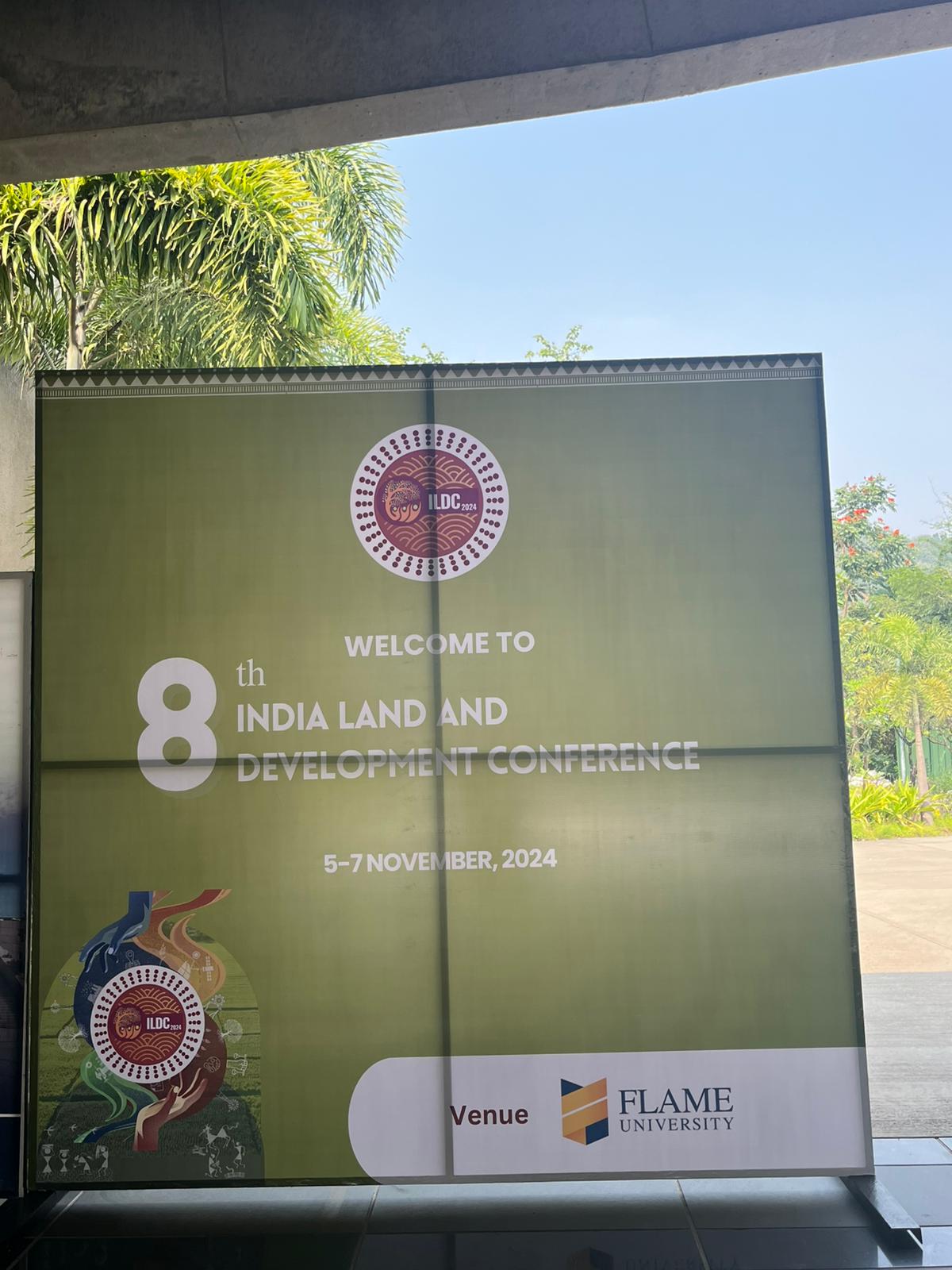India Land and Development Conference, ILDC is back with its eighth episode at the picturesque FLAME University in Pune this week. It has been quite a journey for this collaborative convening. Despite its 8th edition, it has emerged as a globally recognized land convergence event, drawing attention from far and near.
Just thinking of a conference on a topic like ‘Land’, in a country like India, is in itself a big challenge, forget organizing it year after year, for eight years - setting a stature that has grown every year!
Land is hardly taught in any Indian university as a subject. Rarely, it is also followed in practice, by relevant institutions or professionals, either in the development sector or industry. Despite its role remaining pivotal for sustaining life and human beings, and for development and climate actions, land engagements, in India, have remained the domain and prerogative of the State, hardly deliberated and debated.
ILDC has been a bold pioneering attempt, in that context. It has been bringing together land actors and conversations, with an aim to expand India’s land ecosystem with new actors, evidence and agenda. As a different convening, it dares to cross disciplines and sectors and facilitates connections, triggers collaborations and amplifies impacts.
As it turns eight, here is an attempt to characterize eight elements of ILDC, that makes it a different niche and inclusive space around land in India and globally, and not just another conference or land convenings.
1. ILDC is a collaborative and partner-led initiative. From its inception, its design, organization, and sustenance have been crafted through the collaboration of institutions and their representative individuals. Thankfully, the cohort is growing every year, with new partners joining and contributing to its organization with ideas, finances, and intellectual and artistic inputs.
2. Unlike many other academic conferences or development conclaves, ILDC has evolved as a hybrid event, providing and expanding space for both academic and non-academic conversations and going beyond. Every ILDC has become a platform of diverse events – workshops, paper presentations, panel discussions, master classes, lightning talks, practitioners’ windows and round tables etc. Matching to inter-sectoral partners’ needs and aspirations, ILDC strives to boast diverse and innovative forums, providing each one with a showcasing and sharing opportunity.
3. ILDC remains self-funded. Partners keep contributing financially and intellectually. Financial contributions are direct payments to the kitty as well as through covering of own cost of participation. Though they have remained small and irregular, self-organization of tasks and avoidance of outsourcing of tasks and event management has helped it to run on tight budgets. This has also helped it to remain sovereign, flexible and inclusive, and continue to set its own agenda.
4. Going beyond intellectual and academic conversations, ILDC always attempts to expand mediums of land conversations. It has been creating space for artistic and cultural expressions, providing opportunities to artists – photographers, painters, actors, folk artists and dancers etc. to share their interpretations of land narratives. 8th ILDC is carved out an exclusive side event ‘Claiming Space’ that adds place for such expressions while breaking the monotony.
5. Unlike centralized planning and coordination as well as sessions design and curation, that many conferences follow, ILDC practices a decentralized and partner/participant led approach. Most sessions are conceptualized, designed and coordinated by partner institutions with ample freedom to experiment and express innovations and new ideas.
6. ILDC participants are not limited to any discipline or sector. It is a multi-actor platform, where Samaj-Bazaar and Sarkar come together to dialogue on land. Instead of following, building or propagating a particular narrative, ILDC provides space for hundreds of schools of thought to be discussed and debated, thereby making land conversations more nuanced and informed.
7. Despite being organized as a large convening, at national scale, ILDC remains a conference that characterizes personal touch across the event’s value chain. Along with digital interfaces, ILDC coordination and communication are more about personalized conversations that have woven close connections and solidarity among participants.
8. Though conceptualized as a national event, as the name reflects, ILDC has become an international convenings, thanks to its recognition by global land actors. Every ILDC is enriched with substantive global participation, with the online event in 2020, attracting participation from 73 countries, with exclusive Asia and Africa Day. Eighth ILDC witnesses’ participation of delegates from Ethiopia and Bhutan.
Organized by a collective of largely civil society institutions, its persistence, adaptation and evolving ability, makes ILDC a credible conference, that national and global land actors across sectors take note of.

